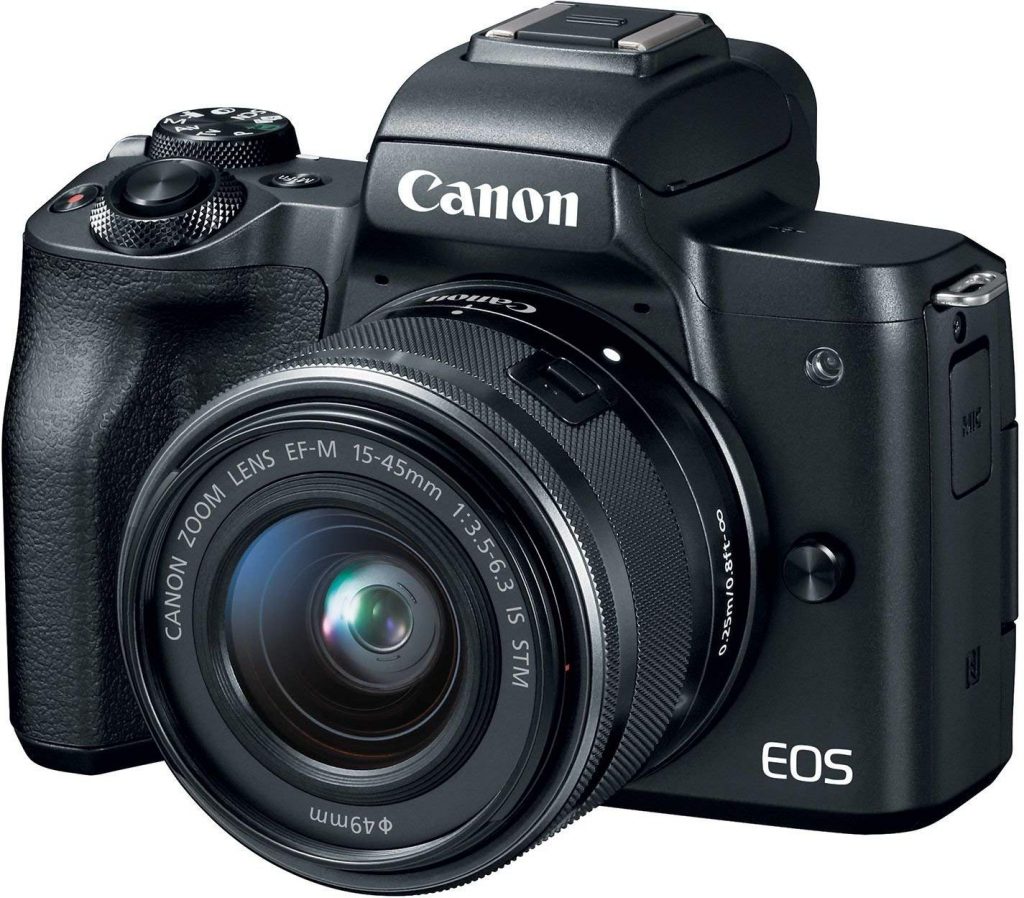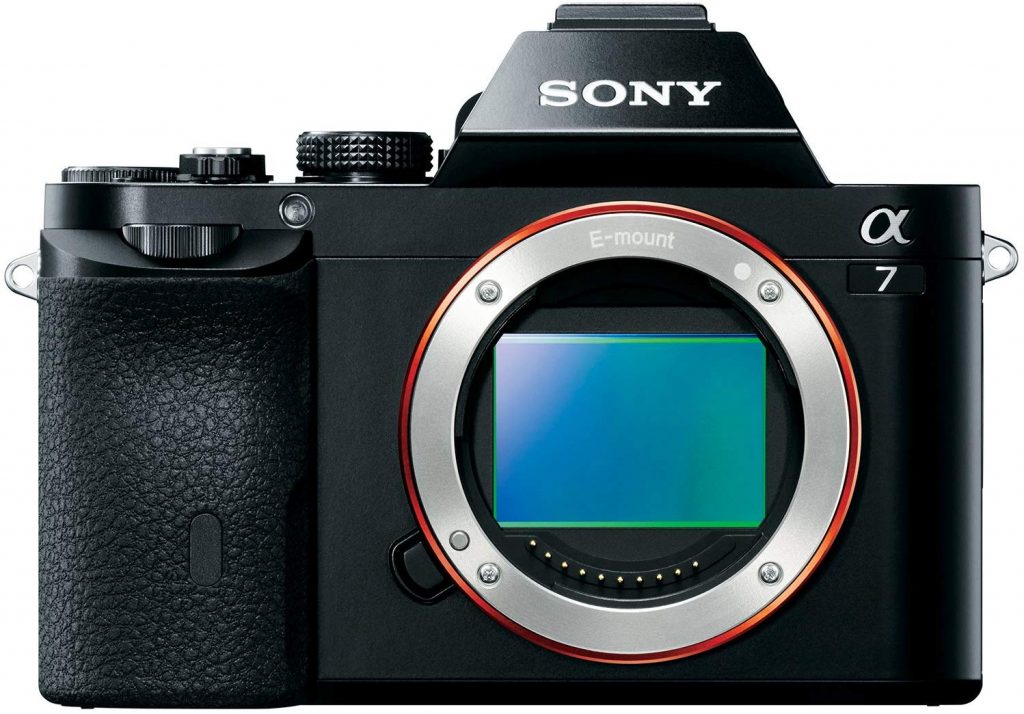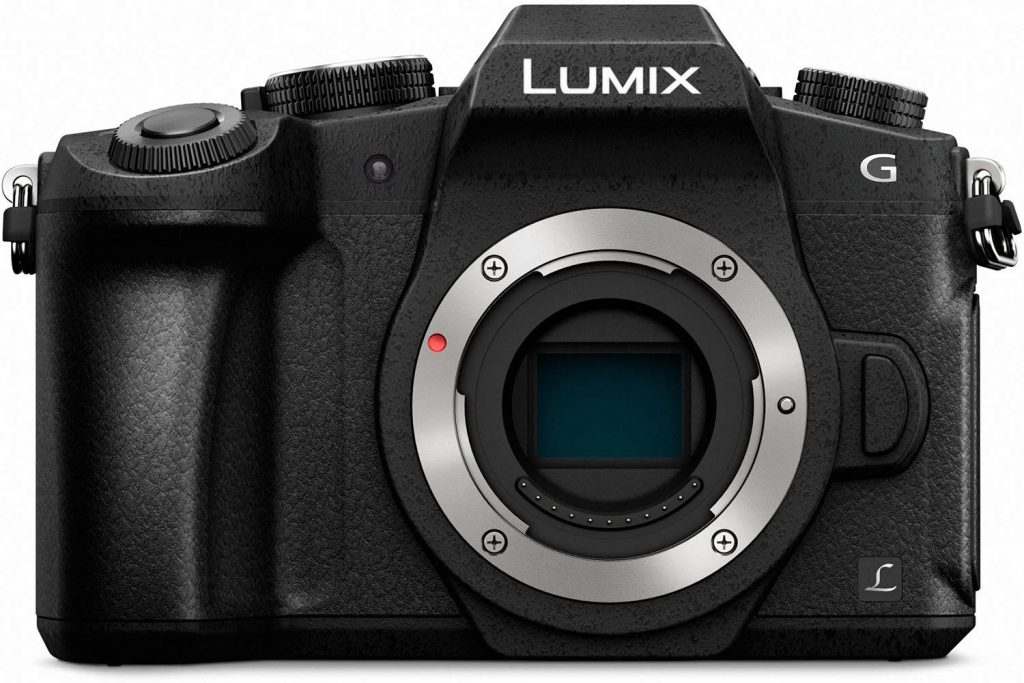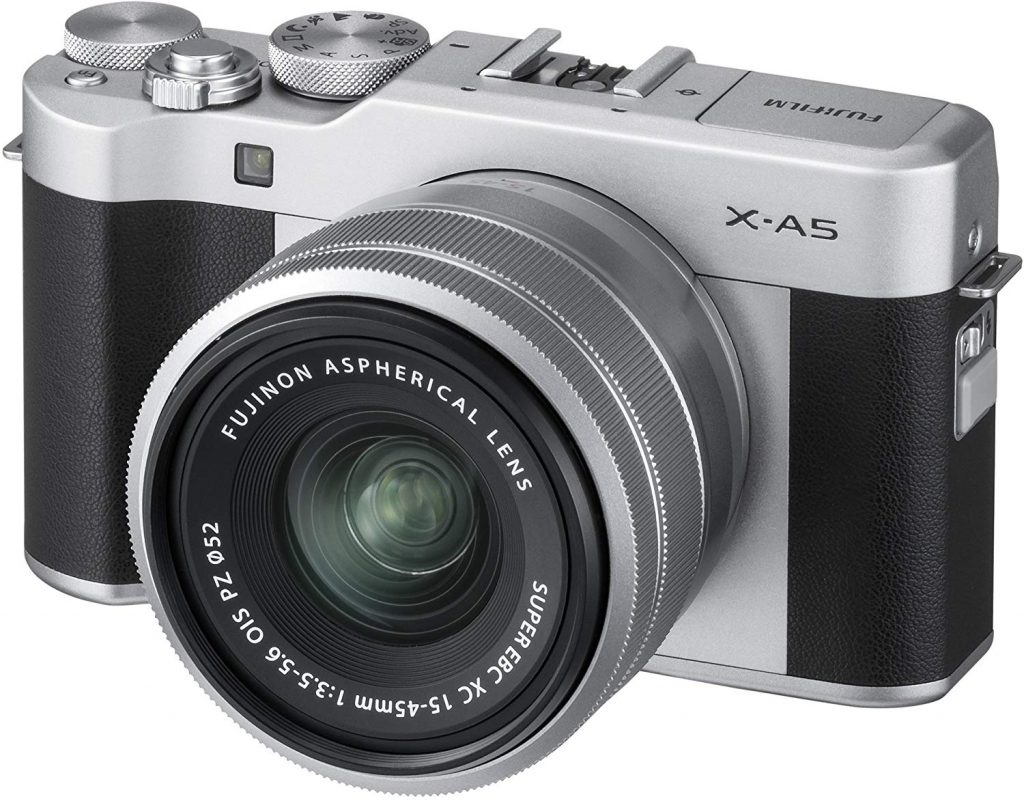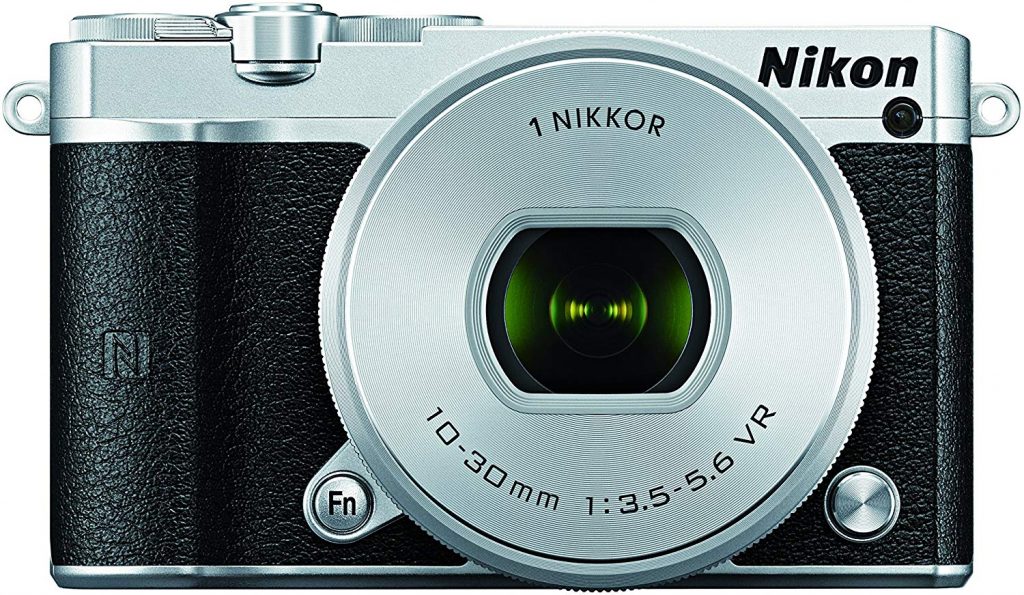All of these cameras mentioned below have gone through proper trials individually; and have also been cross-examined with their alternatives available in the market today to better assist you in picking out the best mirrorless camera under 1000.
Ever since the launch of the first mirrorless camera several years back, the digital marketing industry has grown over several folds. Mirrorless cameras have had a huge role to play in this transformation process, and in this long journey; they have grown their own market exponentially. With the ongoing research in the field and adhering minutely to the customer response received; mirrorless cameras are on the high road towards getting better year after year.
Speaking on behalf of the present-day market conditions; almost every big camera manufacturing firm has at least one mirrorless camera in its list of products. Moreover, the mirrorless camera now comes in all price variants; which shows the wide presence and the firm grasp that these cameras have in the camera industry.
What’s the catch to Best Mirrorless Camera under 1000?
But with such a wide range of varieties of the mirrorless camera comes the confusion to the buyer as to which is the best camera for his use. Further on, if the person proposing to buy a mirrorless camera is an amateur in this field; then it is all the more puzzling. People very often tend to miss out on the minute specifications that they must look for when buying a mirrorless camera for themselves. And that’s where we come to their rescue. We have here, in this blog, compiled a list of the all-time hit 10 best mirrorless cameras under 1000 for you to choose from as per your requirements.
Why Should You Trust Us
In our research for the best products, Team Agatton firstly explores each and every product in extreme detail, next we read 100+ reviews and finally reach out to some of the top professional reviewers working today for their personal opinions over the product in concern. We also interact with professionals who use the reviewed product in their daily lives.
Combining our many years of experience in research & testing tech hardware and software… you can be sure that if our team likes something, it’s pretty damn fantastic and you ought to give it a shot!
Editor’s Best Picks
[amazon table=”11665″]
Mirrorless Cameras vs. DSLR
DSLRs have a lot of times been referred to as an alternative for a mirrorless camera. For any buyer, it is essential to know the difference between these two. Hence down below, you will get to know about the point of similarities as well as points of distinction between these two variants of cameras.
1. Design
As far as the design and build-up of the cameras go, both of these consist of large image sensors and processing chips. These are helpful in getting the optimum quality of images and for smoother and faster performance of the cameras. Both these cameras add to the versatility of the photographs taken by making use of the interchangeable lenses.
2. Mechanism
While in a DSLR camera, a mirror mechanism is applied wherein a mirror is placed in front of the image sensor. It blocks the rays of the light that travels through the lens. When the shutter button is pressed down, the mirror gets raised upwards, and that lets the light hit the image sensor. On the other hand, in a mirrorless camera; there is no such mirror mechanism as there is no reason to block the light coming in.
3. Lens
Both these cameras require the user to purchase the lenses for the camera separately. This often leads to an overall increase in the price of the camera since these lenses can be quite expensive. As opposed to a mirrorless camera; there is a wide variety of lenses available for a DSLR camera in the market.
4. Size
Unlike a DSLR camera, the mirrorless cameras are thinner and smaller in size and are even lighter in weight. They are more compact and hence are easy to carry around.
Best Brands Offering Mirrorless Camera Under 1000
As we have discussed earlier in this article, mirrorless cameras have engulfed the camera industry pretty tight. Hence all major manufacturers of cameras tend to produce these types of cameras. Down below, we have a list of such companies that manufacture mirrorless cameras for the user to select; if they are inclined towards buying their camera from one specific brand.
1. Sony
This is your go-to company if you are looking for the best image sensors available and excellent AutoFocus and 4K video quality for your camera. The company also offers an array of lenses that a user can choose from as per their need. Users do have reported several issues with the manufacturing quality of the products sometimes; but with the advent of third party investments, Sony does seem to have a better future in the camera market.
2. Fujifilm
This firm lays a lot of emphasis on the retro designs of the camera produced. The firm offers in its products manual control features, distinctive picture profiles, and regular firmware updates.
3. Panasonic
This firm is the most advanced among its peers when it comes to installing the latest features and technologies in its products; the 5-axis stabilization system is one such example of this. Panasonic has emerged over several years as a prominent company in matters of professional video shoots and photography features. The company uses small-sized sensors that lead to a compact design of the lenses. Further on, it also provides the widest range of glass in the mirrorless camera sector.
4. Canon
The firm has always catered to the needs of the evolving digital camera market. The company has always been best at introducing new features and adding on to its list of models in every section of the camera it produces. Recently it has started putting in more resources on its mirrorless camera unit; and we hope it will change the very dynamics of the camera industry in a few years to come.
Benefits Of Mirrorless Camera
With the ongoing research and developments in the fields of the mirrorless camera; it will of little surprise if, in a couple of years; it surpasses DSLRs in the race of becoming the best type of digital camera available in the market. Next below, you will read about the benefits that you, as a buyer; will be entitled to if you pick any of the cameras from the below list of the best mirrorless camera under 1000.
1. Viewing even in Dark
The mirrorless cameras have the potential to display live images on a real-time basis, irrespective of the external settings. When you will increase the shutter speed and allow more light to the sensors of the camera; you will notice that the scene gets brighter in the viewfinder as well as on the LCD screen. This brighter view will assist you to get a shot even when it is dark outside.
2. Living Histogram
The live histogram component makes sure that the photographer gets a correctly exposed image. As and when the photographer will tweak and compose the exposure settings in the camera; they will be able to view a real-time histogram in the viewfinder or on the LCD screen.
3. The Sheer Size
Mirrorless cameras are packed with high-end technology like In-Body Image Stabilization and still manage to come in small and compact sizes. The sheer size of the camera aids the easy use of it, especially when the photographer is traveling. Most mirrorless cameras come in sizes that are much smaller than their peers, i.e., the DSLR.
4. Auto Focus
This is the one major area of expertise of the mirrorless cameras. Since the mirrorless cameras do not use a mirror in front of its sensors; it does not require a separate focusing sensor. To focus directly, the mirrorless camera makes the best use of the image sensor. In this way, it achieves the target of eliminating any alignment issues and; at the same time, manages to get the desired focus every time. Hence you see the AutoFocus is one such area where mirrorless cameras beat the regular DSLRs. A regular DSLR uses a separate sensor to get AutoFocus. DSLRs have a system that is termed as phase detection. It is primarily used to gauge the distance of the object from the camera before indicating the lens where to focus.
For this system to work efficiently, there must be a perfect alignment between the mirror; the AutoFocus sensor, the lens motors, and the image sensor.
5. White Balance
This one benefit can be completely enjoyed when the photographer is shooting in JPEG format. While the photographer customizes the white balance settings in his camera; they will also be able to change several color intensities and can even eradicate any color casts. All of these changes can be viewed through the viewfinder or the LCD screen on a real-time basis.
6. Manual Focusing
In a mirrorless camera, manual focusing is much simpler than it is in a DSLR camera, especially in conditions of low lighting. Features such as the Focus Peaking and Temporary Zoom Assist will help you determine; whether the photographer has focused on the shot accurately or not. With Focus Peaking, the camera will add a highlight color on the viewfinder; and the LCD screen to all those areas of the scene that are in focus. It is this highlighting feature that will help you understand whether or not you have focused correctly irrespective of the quality of your vision.
7. Field Preview Depth
In a mirrorless camera, there is a sensor to display what the photographer sees in the viewfinder; which helps in getting an accurate depth of field preview. Whereas in a DSLR camera, it is quite difficult to get an estimate of the depth of the field in the final shot. Although many DSLRs come with a depth of field preview button, most of the time; these are not accurate and often reduce the amount of light reaching the viewfinder.
8. Zebra Patterns
These patterns are the black and white lines that can be viewed on the viewfinder to reveal the areas in the scene that are getting overexposed. These zebra lines are fully customizable in a mirrorless camera. These are generally displayed when the photographer is shooting stills or videos.
Best Mirrorless Camera Under 1000:
1. Canon EOS M50
This compact camera comes with an interchangeable lens and is the optimum choice for amateur photographers who can use its features to enhance the quality of their images and videos. The camera comes with a 24.1MP APS-C CMOS sensor and the DIGIC 8 Image Processor. These make sure that the output image delivered has incredible color, clear details, and a stunning dynamic range. It comes well equipped with a silent shooting mode, which implies a fully electronic shutter.
This lets the serenity of the scene remain undisturbed due to any unnecessary noises, and at the same time, the photographer also gets a perfect shot. For balancing shadows and highlights in high contrast scenes, Canon’s Auto Lighting Optimiser is very helpful. The output images have a high degree of detail due to the built-in high-resolution electronic viewfinder that features approximately 2,360,000 dots.
The Canon EOS M50 has WiFi, NFC, and Bluetooth connectivity that ensures there is an always-on connection to your smartphone using the free Camera Connect app. So one can easily create a backup of their photos and then upload them online. The price of this camera is somewhere under $650 and hence is one of the best mirrorless cameras under 1000 for those who are into vlogging.
| Pros | Cons |
| Nice feeling in the hand | High ISO is hardly functional above ISO 3200 |
| Absolutely fantastic battery life | Image quality breaks up basically as soon as you edit |
| Big LCD screen |
Specifications:
- Advanced autofocus improved over the M5
- 99 af points minimum
- 80×80 area coverage of the af
- 143 points with select lenses that cover the entire area of the sensor
- Dual pixel CMOSs AF, much improved
- Eye detection AF in one shot
2. Olympus OM-D E-M10 Mark II
This camera is suitable for all types of photographers, i.e., whether you are an amateur in this field of photography or a pro. It helps you maximize your creativity in several folds. The camera has a compact profile, intuitively placed controls, and an advanced 5-axis image stabilization system that adds sharpness to the images. Another prominent feature is the generous OLED electronic viewfinder. The 2.36 million pixels of the camera provide immense clarity to the image and thus makes it easier to view in bright sunlight. It also helps the photographer to monitor any changes in the camera settings like aspect ratio and art effects without having to move your eyes away from the viewfinder. Another great point is the Touch AF feature that lets the photographer focus and then releases the shutter by gently tapping on the area of the screen. This camera is priced at just under $500.
| Pros | Cons |
| Versatile and lots of customization options | 4K timelapse at 5fps playback |
| Most buttons are customizable | Continuous AF/tracking accuracy is erratic |
| Top-notch image quality | No 4K video |
| Good performance |
Wacky power switch |
Specifications:
- Micro Four Thirds Mount
- Number of effective pixels : Approx. 16.1 million pixels
- Total number of pixels : Approx. 17.2 million pixels
- Aspect ratio : 1.33 (4:3)
- SLR-style mirrorless
- 16 megapixels
3. Canon EOS M100
This camera is a handy device for those of you who look for an easy-to-use but a highly capable camera. It includes a 24.2MP APS-C CMOS Sensor with a DIGIC 7 Image Processor, and that makes it more powerful than any of its fellow competitors. There is a textured pattern around the thumb rest of the camera so that the photographer can wrap their fingers around it and get a solid hold. Most of the camera’s settings can be controlled using the 3-inch, 1040-K dot touchscreen.
The screen can be tilted to an angle of 180 degrees, thereby allowing the camera to enter the self-portrait mode for high-quality selfies automatically. The images clicked can later be easily shared via the built-in WiFi, NFC, or Bluetooth technology of the camera. The camera uses Li-ion LP-E12 rechargeable batteries that have a running time of 30 minutes in Full HD video. This marvelous camera is priced at just under $450.
| Pros | Cons |
| Compressed size and light weight make it portable | Poorly implemented manual focus magnification |
| Excellent image quality with a reliable white balance | A very small range of native EF-M lenses |
| Easy-to-use interface that offers full-degree manual controls |
Specifications:
- Dual Pixel CMOS AF (Face+Tracking AF, 1-point AF)
- 49 AF points through camera automatic selection
- Freely position 1 AF point/ 1 AF Zone (9 points, 3×3 grid) through manual selection
- EV -1 – 18 at 23 °C
- ISO 100 with EF-M 22mm f/2 STM)
- Shutter speed of 30-1/4000 sec in 1/3 stop increments, Bulb (Available range varies by shooting mode)
4. Panasonic Lumix GX85
This particular camera is efficient enough to take professional photos without putting in much of an effort. The powerful and compact body of the Lumix GX85 has a 16-megapixel Micro Four Thirds sensor with no low pass filter. This sensor also gives nearly a 10% boost in the fine detail-resolving power, which adds to the sharpness of the images. The camera uses a super compact 12-32mm and 45-150mm lenses that help in shooting stabilized ultra-fast 3-frames-per-second 4K video. The in-body 5-axis dual system works in both photos and 4K video recordings for class-leading image stabilization and to show clear handheld shots even in conditions of low-light.
A photographer can capture images at lightning speed of up to 30fps using the 4K Post Focus feature. Moreover, one can even tune in the focus points after the photo has been shot. The touch control 3-inch LCD screen can tilt to an angle of 80 degrees upwards and 45 degrees downwards for smooth framing.
| Pros | Cons |
| Excellent build-quality | EVF could be better |
| Good ergonomics for its size | Sluggish RAW and RAW+JPEG buffer clearing |
| Built-in 5-axis Dual IS, Built-in EVF | No external mic and headphone jacks |
| Tilting LCD touchscreen monitor | Slow x-sync speed |
| Competitive still image quality | |
| Excellent 4K video quality |
Specifications:
- Compact System Camera
- Weight 17.6 oz (498 g) includes batteries, kit lens
- Size 4.8 x 2.8 x 1.7 in (122 x 71 x 44 mm)
- Megapixels 16.0
5. Sony A7
This is one of the classic mirrorless cameras that comes at a very affordable price. The hybrid AutoFocus feature of the camera makes it fall into the category of value for money. It has a proper blend of phase and contrast-detection points. Further on, it includes a very fast burst shooting rate, and even the performance of the ISO is great. The 24.3MP CMOS full-frame sensor makes the camera super-efficient. Although one can shoot only 1080p videos using this camera. The mere fact that the price of this camera didn’t go downhill even after the release of the next-generation models of the camera proves that the Sony A7 is still valued, even after 5 years of its release.
| Pros | Cons |
| Comes with a full-frame image sensor | None |
| Efficient AF system | |
| Great results even on high ISO | |
| High-quality OLED digital viewfinder |
|
| Small, dirt- and moisture-resistant build |
Specifications:
- 24MP – Full frame CMOS Sensor
- ISO 50 – 25600
- 3″ Tilting Screen
- 2359k dot Electronic viewfinder
- 5 fps continuous shooting
- 1920 x 1080 video resolution
- Built-in Wireless
6. Panasonic G85
It is among the best cameras available in the market today for video recording at this price range. It provides 4K and 1080p support and has a super impressive image stabilization system. This camera is specifically for those who are into movie making and vlogging. The camera has made it big in the digital industry because of its performance and UHD 4K footage quality. It comes with a 16MP MOS image sensor and a light sensitivity range of 200–25600. This makes it ideal for shooting in various lighting conditions. The camera even provides a burst shooting mode with 10fps and a single-shot AF. The camera remains cool even when recording 4K. So it provides a solution to the problem of overheating, which is quite a common issue with most of the cameras of this range.
| Pros | Cons |
| 4K video support | Disappointing battery life |
| Integrated Wi-Fi |
Lacks headphones input |
| Display has touchscreen controls | |
| Rugged body with weather protection |
Specifications:
- 5-axis image stabilization with Dual I.S. 2
- Splash/dust-proof body
- Depth from Defocus AF
- 2.36M-dot OLED EVF
- 3-inch 1.04M-dot fully-articulating touchscreen LCD
- 4K video / photo
7. Fujifilm X-A5
This two-year-old model includes most of the important features that come in a modern camera that, too, at an affordable price of below $500. It has a stylish retro design and provides an array of features such as the 180 degrees tilting rear LCD screen, built-in Bluetooth technology, and extended battery life. This particular camera can shoot up to 450 frames per charge. It allows the photographer to take stunning self-portraits using the amazing wide-angle lens. The latest designed 24.2-megapixel APS-C sensor provides an accurate scene recognition in SR+ AUTO mode. It also gives an amazing color reproduction performance and adds on to the skin tone reproduction capability to the camera.
The camera even has an easy to use tilting screen, which can be flipped and rotated to the front when required. One can quite effortlessly take amazing selfies and share them on their social media sites such as Facebook and Instagram. The tilted display is yet another one of the camera’s unique selling points. It comes with super impressive battery life and is worthy of its place in the best mirrorless camera under 1000 list.
| Pros | Cons |
| Quite Affordable | No Electronic Viewfinder |
| Great Self-Portraits | Unreliable White-Balance mode |
| Long Battery Life | |
| High-Quality Lenses |
Specifications:
- Rangefinder-style mirrorless
- Effective Pixel- 24 megapixel
- Resolution- 6000 x 4000
- ISO Auto, 200-12800 (expandable to 100-51200)
- Focal Length Multiplier 1.5×
8. Olympus PEN-F
The camera is best-suited for fast-paced photography since it has a new 20MP Live MOS sensor with 50MP High-Resolution Shot mode. The camera built is pretty slick, with varied customizable retro looks that provide the photographer full control over the look of their camera. It has a powerful in-body image stabilization feature that accounts for ultra-sharp images. Hence, it is best for street shooting. In the new edition, the dials of the camera have been moved, and so it no longer comes in the way of shooting. The new and improved electronic viewfinder is very sharp and lets the photographer keep an eye on the subject while monitoring the controls of the camera’s setting. Although, one cannot record videos in 4K resolution. Also, the camera does not have a headphone jack or a microphone facility.
| Pros | Cons |
| Ultra sharp images | No 4K videos |
| Tiltable screen | |
| Touchscreen and WiFi features |
Specifications:
- Effective Pixel 20 megapixels
- Weight 427 g (0.94 lb / 15.06 oz)
- Sensor CMOS
- Lens Mount- Micro Four Thirds
- Focal Length Multiplier 2×
- Screen Size 3″
9. Nikon 1 J5
If you are a photographer and are looking for a small camera with interchangeable lenses so that you can take dynamic photos, then this is the product for you. The camera has made it into the list of the 10 best mirrorless cameras under 1000 because of its 1-inch sensor, powerful processor, and the ability to record 1080p videos with up to 60fps. Further on, Nikon 1 J5 has had a magnanimous upgrade when compared to the previous models. Now it can be easily placed alongside larger mirrorless cameras with better APS-C and Micro Four Thirds image sensors. This particular model coming from the house of Nikon is easy to comprehend and offers a far better set of features and performance than most of the other compact cameras.
| Pros | Cons |
| Integrated Wi-Fi and NFC | Clunky interface design that slows down the camera operation |
| LCD touchscreen that can be rotated up to 180 degrees | Requires micro-SD format memory cards that are too tiny |
| High-burst shooting mode speed with 20fps | Lacks a hot shoe for attaching a flash or EVF |
| Pretty high resolution of 21MP |
Specifications:
- Effective Pixels (Megapixels) 20.8 million.
- 13.2mm. x 8.8mm.
- Image Sensor Format. CX.
- microSD (micro Secure Digital) microSDHC. microSDXC memory cards.
- 20 frames per second.
- Movie. HD: 1920 x 1080/60p. HD: 1920 x 1080/30p. HD: 1280 x 720/60p. HD: 1280 x 720/30p
10. Sony RX100
With the arrival of the RX100 model, Sony has managed to integrate a huge Exmor CMOS Sensor into a compact ultra-slim camera body. This particular device offers an outstanding picture quality for its size. It has a 1-inch sensor, 3-Inch LCD screen with 12M dots, a Zeiss lens, ISO 125-6400, and a 20MP resolution. It provides steady-Shot image stabilization, rear control dials, and customizable front control ring. Sony’s WhiteMagic technology offers greater brightness and improved battery life. It also has the capability of 1080p60 video capture or 1080i with further the ability to shoot a 17MP stills without interrupting the movie recording. As per the CIPA test results, the camera can boast a respectable 330 shots from a charge. It’s probably the best choice for a mirrorless camera under 1000 when you want to shoot weddings or travel blogs.
| Pros | Cons |
| Terrific image quality produced by a small body | Disappointing battery life |
| Suitable for outdoor and low-light photography | Can sometimes clip highlights |
| High-resolution photos | |
| RAW format support |
|
| Offers fully manual controls |
Specifications:
- Exmor CMOS sensor 13.2 x 8.8mm
- 3:2 aspect ratio
- 20.2 million efficient pixels.
- 28-100mm (equiv), f/1.8-4.9 Vario-Sonnar T* lens
- Steady-Shot image stabilization
- ISO 125-6400
Final Words:
So there you go, in this article, we have tried our level best to help you out to determine the best mirrorless camera under 1000. We hope after going through this article, you will make a well-informed choice as to which is the camera that is best suited for you as per your requirements. As the trends have been going for the past couple of years, it is sure that we will see a rise in the sales of mirrorless cameras in the near future. Understanding the specifications of the camera is of the utmost importance when you are planning on purchasing one. You must get answers for all your whys and hows of a camera before investing in a device. Only then will you be able to make an informed choice.
Also Read – Best Camera for Travel
